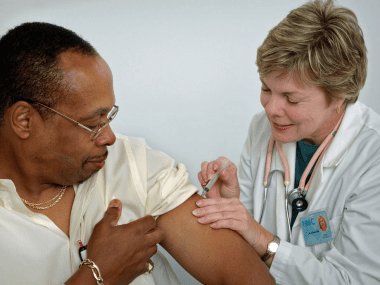
Special thanks to NFID Vice President, Walter A. Orenstein, MD and Katherine Seib, MSPH for this blog post on the goal for global eradication of polio. More on this topic can be found at http://aapnews.aappublications.org/content/early/2013/06/03/aapnews.20130603-1.
We are on the verge of permanently ridding the world of polio, a disease synonymous with paralysis and death. Before polio vaccines were available, polio outbreaks caused more than 15,000 cases of paralysis each year in the US and were widely feared. The last US outbreak of polio in the US was in 1979, and by 1988 efforts began to eradicate the disease globally thanks to a resolution by the World Health Assembly. Today, only Pakistan, Nigeria, and Afghanistan are considered to be endemic for polio compared to 125 endemic countries in 1988. Currently, we are experiencing the lowest number of polio cases ever recorded — 223 cases in 2012 compared to about 350,000 in 1988. This was achieved through the use of two types of polio vaccines: oral polio vaccine (OPV) and inactivated polio vaccine (IPV). If polio eradication efforts stop prior to achieving eradication, a major resurgence of wild virus polio is predicted. Within a decade, at least 200,000 cases of paralytic polio would be expected worldwide every year.
We are better poised now than we ever have been to eradicate polio. OPV has been the primary vaccine used in achieving eradication of wild polioviruses because of its low cost, ease of use, ability to confer immunity to close contacts, induce high levels of individual immunity, and induce intestinal immunity to block transmission. However, following wild virus eradication, use of OPV must be stopped. In rare cases, OPV can cause a form of polio itself. One way is by direct paralysis of vaccine recipients or their close contacts which is known as vaccine-associated paralytic polio. The other way is through transmission from person-to-person leading to mutations that confer the transmissibility and neurovirulence properties of wild viruses leading to polio outbreaks which is known as circulating vaccine-derived polioviruses. IPV does not carry this risk.
To address problems of vaccine-associated and vaccine-derived paralytic polio, the World Health Organization (WHO) and partners have developed a strategic interim plan with four major objectives:
- Detect and interrupt all poliovirus transmission.
- Strengthen immunization systems (to facilitate introduction of affordable IPV) and withdraw OPV use.
- Contain poliovirus and certify interruption of transmission.
- Develop a legacy plan to secure a polio-free world and build on the experience and assets to address other health priorities.
IPV introduction is important to assure polio caused by wild or vaccine viruses does not return. Its use will prime the population so that if polioviruses are ever reintroduced through bioterrorism or a break in lab containment, stopping widespread transmission will be easier than if the entire population born following OPV termination is susceptible.
Use of IPV faces major obstacles, including more costly administration via needle and syringe and cold-chain storage requirements. Nevertheless, the benefits of IPV in ensuring eradication more than outweigh these costs. Benefits of a polio-free world would be garnered by eliminating the suffering caused by paralytic polio, as well as eventually eliminating the need for all polio vaccines, as with smallpox.
More information about the Global Polio Eradication Initiative and the Eradication Endgame and Strategic Plan can be found at http://www.polioeradication.org/Resourcelibrary/Strategyandwork.aspx
When do you think polio will be completely eradicated?
To join the conversation, follow us on Twitter (@nfidvaccines), like us on Facebook, and join the NFID Linkedin Group.
Related Posts
5 Summer Travel Vaccination Tips for Adults
Are you planning an overseas vacation this summer? Depending on the destination, you may need to think about recommended vaccines for you and your kids.…

Five Important Reasons to Vaccinate Your Child
The Centers for Disease Control and Prevention (CDC) has designated April 26-May 3, 2014 as National Infant Immunization Week (NIIW), an annual observance highlighting the importance of protecting…

ID News Round-Up
Recent items of interest from the world of vaccine-preventable diseases: 1. The Advisory Committee on Immunization Practices (ACIP) met on October 23-24, 2013 to discuss…
